Moncler Bundle
Who Really Owns Moncler?
Understanding Moncler SWOT Analysis is crucial for investors, but it all starts with ownership. Who controls the reins of this luxury fashion giant? From its humble beginnings in the French Alps to its current status as a global powerhouse, Moncler's journey is intertwined with its evolving ownership structure.
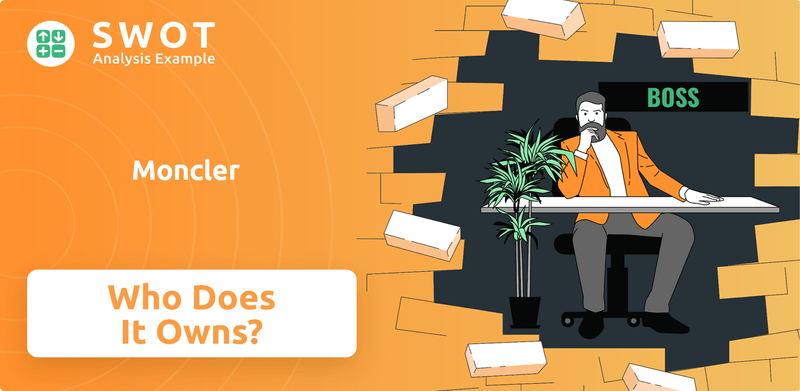
This exploration into Moncler's ownership will uncover the key players behind the Moncler brand, from its founders to its major investors and current shareholders. We'll trace the Moncler company's evolution, examining its strategic decisions and financial performance, all shaped by the individuals and entities that control its destiny. Discover the answers to questions like: Who acquired Moncler, and how has its ownership shaped its business model and market capitalization?
Who Founded Moncler?
The story of the Moncler brand began in 1952, thanks to the vision of René Ramillon, a French craftsman specializing in mountain gear, and André Vincent. They established the company in Monestier-de-Clermont, a village near Grenoble, France. Initially, their focus was on creating practical equipment for outdoor activities.
Early products included padded sleeping bags, a single model of lined hooded cape, and tents designed with a telescopic structure and external covering. The first down jackets were developed in 1954, initially for the company's workers to wear over their overalls. These jackets were designed to offer protection against the harsh climates.
The potential of these products for mountaineering was recognized by French mountaineer Lionel Terray, leading to the creation of the 'Moncler pour Lionel Terray' range. In 1954, the company's down jackets were selected to equip the Italian expedition to K2, which successfully conquered the world's second-highest summit. Specific details about the equity split or shareholding percentages of Ramillon and Vincent at the company's inception are not publicly available.
The founders' initial focus was on functional gear, reflecting their vision for practical and protective outdoor equipment. The Moncler company evolved, and its ownership structure underwent changes over time, eventually becoming an Italian brand in 1992 through its acquisition by Pepper Industries, which later sold it to Finpart. The brand faced challenges during the 1990s under Finpart's ownership. The company's journey reflects a shift from its origins to its current status as a prominent luxury brand.
- The company was founded in 1952.
- The initial products were designed for outdoor activities.
- The brand gained recognition through mountaineering expeditions.
- Ownership transitioned to an Italian entity in 1992.
Moncler SWOT Analysis
- Complete SWOT Breakdown
- Fully Customizable
- Editable in Excel & Word
- Professional Formatting
- Investor-Ready Format
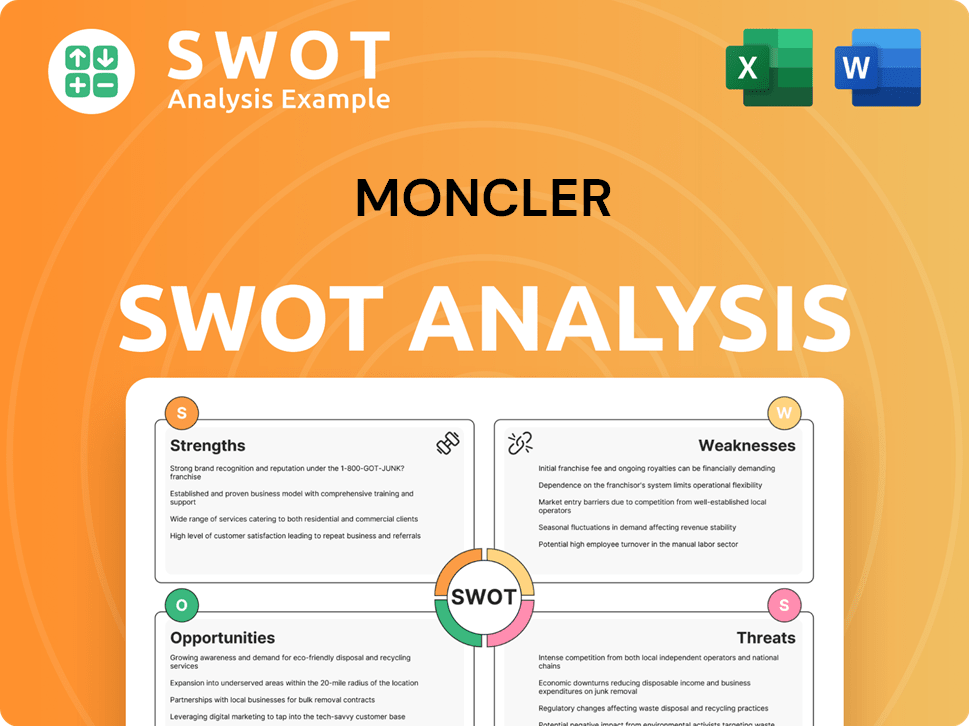
How Has Moncler’s Ownership Changed Over Time?
The journey of the Moncler brand through various ownership structures reflects its evolution from a niche producer to a global luxury powerhouse. A pivotal moment occurred in 2003 when Remo Ruffini acquired the company, relocating its headquarters to Milan and setting the stage for its transformation. This strategic move was crucial in repositioning Moncler as a luxury brand, laying the groundwork for future growth and expansion.
The initial public offering (IPO) on the Milan Stock Exchange in December 2013 marked a significant milestone. The IPO was highly successful, with shares oversubscribed and a substantial increase in value on the first day of trading. This event not only provided capital for expansion but also solidified Moncler's position in the luxury market and attracted significant investor interest.
| Date | Event | Impact on Ownership |
|---|---|---|
| 2003 | Remo Ruffini acquires Moncler | Ruffini becomes the owner and shifts the brand's focus to luxury. |
| 2008 | Carlyle Group acquires a 48% stake | Introduces a private equity investor, while Ruffini retains a significant share. |
| 2013 | Moncler IPO | Moncler becomes a publicly traded company; Ruffini remains a major shareholder. |
| 2015 | Ruffini regains largest shareholder position | Ruffini increases his stake, Eurazeo reduces its holdings. |
| March 2019 | BlackRock acquires a stake | BlackRock becomes a shareholder; Ruffini remains the main shareholder. |
| September 2024 | LVMH acquires a stake in Double R | LVMH gains indirect exposure; Ruffini remains the largest shareholder. |
| February 2024 | Rivetti family and Temasek exit Double R | Rivetti family and Temasek become direct stakeholders in Moncler. |
As of September 2024, Remo Ruffini, through Double R, holds approximately 15.8% of Moncler's shares. LVMH's acquisition of a 10% stake in Double R provides indirect exposure to Moncler, with plans to increase its investment. In February 2024, the Rivetti family and Temasek became direct stakeholders, owning 4% each. These shifts highlight the ongoing evolution of the Moncler company's ownership structure and the strategic partnerships shaping its future.
The Moncler ownership structure has evolved significantly since Remo Ruffini acquired the brand. The IPO in 2013 brought in public investors, while private equity firms like Carlyle Group and BlackRock have also held stakes.
- Remo Ruffini remains the largest shareholder.
- LVMH has a strategic investment through Double R.
- The Rivetti family and Temasek are direct stakeholders.
- Moncler's market capitalization exceeded €4 billion after the IPO.
Moncler PESTLE Analysis
- Covers All 6 PESTLE Categories
- No Research Needed – Save Hours of Work
- Built by Experts, Trusted by Consultants
- Instant Download, Ready to Use
- 100% Editable, Fully Customizable
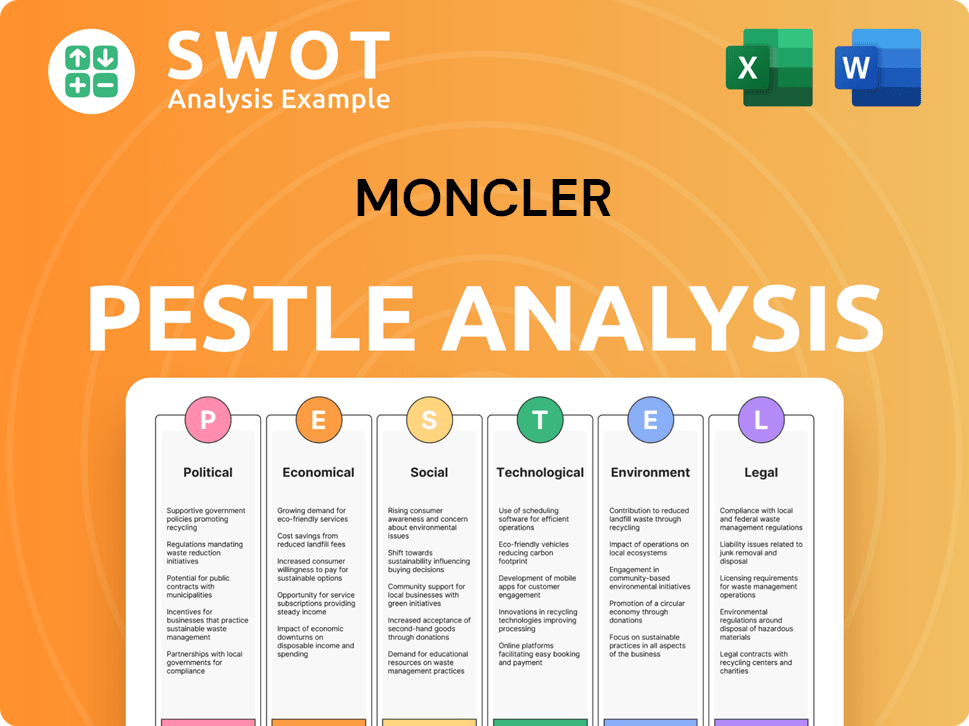
Who Sits on Moncler’s Board?
The corporate governance of the Moncler company is designed for transparent and responsible business operations, utilizing a traditional governance and control system. The Board of Directors is central to guiding and managing the company and the group. As of April 16, 2025, a new Board of Directors was appointed for the three-year period 2025-2027, comprising 15 members.
The board includes key figures such as Remo Ruffini, Marco De Benedetti, and Alexandre Arnault. Independent directors also play a crucial role, including Bettina Fetzer and Sue Nabi. Alexandre Arnault's presence reflects LVMH's strategic partnership with Remo Ruffini's holding company, Double R. This partnership grants LVMH specific rights, including the appointment of members to both Double R's and Moncler's boards. This structure is essential for understanding Moncler's business model and its ownership dynamics.
| Board Member | Role | Notes |
|---|---|---|
| Remo Ruffini | Board Member | Holds significant influence through Double R srl. |
| Alexandre Arnault | Board Member | Represents LVMH's strategic partnership. |
| Bettina Fetzer | Independent Director | Contributes to the board's independent oversight. |
The composition of the board highlights the influence of major shareholders and their impact on the Moncler brand. The list of candidates presented by Double R srl, holding 16.87% of Moncler's share capital, received 58.365% of the votes cast. Another list, presented by a group of asset management companies and institutional investors holding 1.58% of Moncler's share capital, received 41.143% of the votes. This governance structure confirms Remo Ruffini's control over Double R, shaping the Moncler company ownership structure.
The Board of Directors at Moncler comprises 15 members, including both executive and independent directors.
- Remo Ruffini's influence is significant, stemming from his control over Double R srl.
- LVMH's strategic partnership is reflected in Alexandre Arnault's board membership.
- Independent directors ensure oversight and balanced decision-making.
- Shareholder voting results demonstrate the influence of major stakeholders.
Moncler Business Model Canvas
- Complete 9-Block Business Model Canvas
- Effortlessly Communicate Your Business Strategy
- Investor-Ready BMC Format
- 100% Editable and Customizable
- Clear and Structured Layout
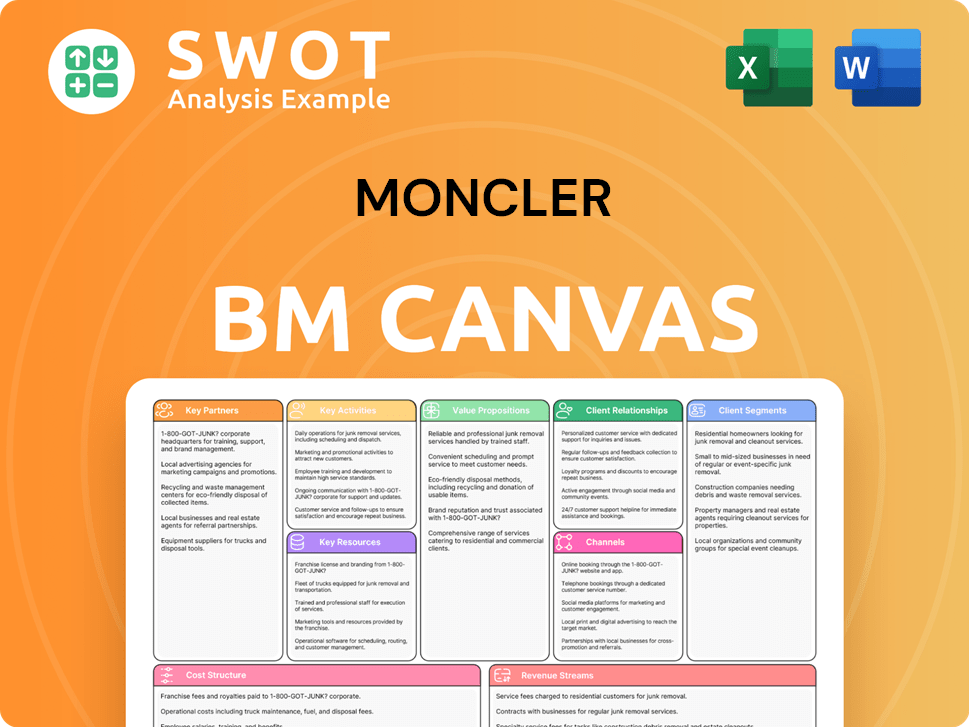
What Recent Changes Have Shaped Moncler’s Ownership Landscape?
Over the past few years, the ownership structure of the Moncler brand has seen significant shifts. A major move was the acquisition of Stone Island in December 2020 for €1.15 billion, which positioned Moncler as an acquirer in the luxury sector. This strategic move aimed to create a hub of Italian luxury brands, reshaping the company's market position.
A key development involves a partnership between Remo Ruffini's holding company, Ruffini Partecipazioni Holding, and LVMH Moët Hennessy Louis Vuitton, formed in September 2024. LVMH acquired a 10% stake in Double R, the investment vehicle controlled by Ruffini Partecipazioni Holding, which directly owns approximately 15.8% of Moncler's shares. This collaboration aims to reinforce Ruffini's control as the largest shareholder and provides LVMH with indirect exposure to the company. Double R intends to increase its stake to a maximum of 18.5% over the next 18 months, with LVMH funding these purchases and increasing its investment in Double R to up to 22%.
| Key Developments | Details | Impact |
|---|---|---|
| Stone Island Acquisition (2020) | Acquired for €1.15 billion | Expanded portfolio, positioned as an acquirer. |
| LVMH Partnership (September 2024) | LVMH acquired a 10% stake in Double R. | Strengthened Ruffini's control, provided LVMH exposure. |
| Shareholder Direct Ownership (February 2024) | Rivetti family and Temasek became direct shareholders. | Simplified ownership structure, potential for broader investor base. |
In February 2024, the Rivetti family and Singapore state investor Temasek, who had stakes in Double R following the Stone Island acquisition, opted to become direct shareholders in Moncler. The Rivetti family now holds a 4% direct stake, and Temasek also holds a 4% direct stake. These changes suggest a potential simplification of the ownership structure, making the company more accessible to a broader investor base. The Growth Strategy of Moncler shows the company's dynamic approach to market changes.
Moncler Group reported consolidated revenues of €3.1 billion in 2024, showcasing robust financial health. The company's direct-to-consumer (DTC) sales have experienced double-digit growth, contributing to over 80% of total sales by the end of 2024.
The group maintains an operating profit margin of approximately 29.5% as of 2024, demonstrating efficient operations and strong profitability. Despite a cautious outlook for 2025, Moncler remains confident in its ability to adapt and innovate.
Moncler Porter's Five Forces Analysis
- Covers All 5 Competitive Forces in Detail
- Structured for Consultants, Students, and Founders
- 100% Editable in Microsoft Word & Excel
- Instant Digital Download – Use Immediately
- Compatible with Mac & PC – Fully Unlocked
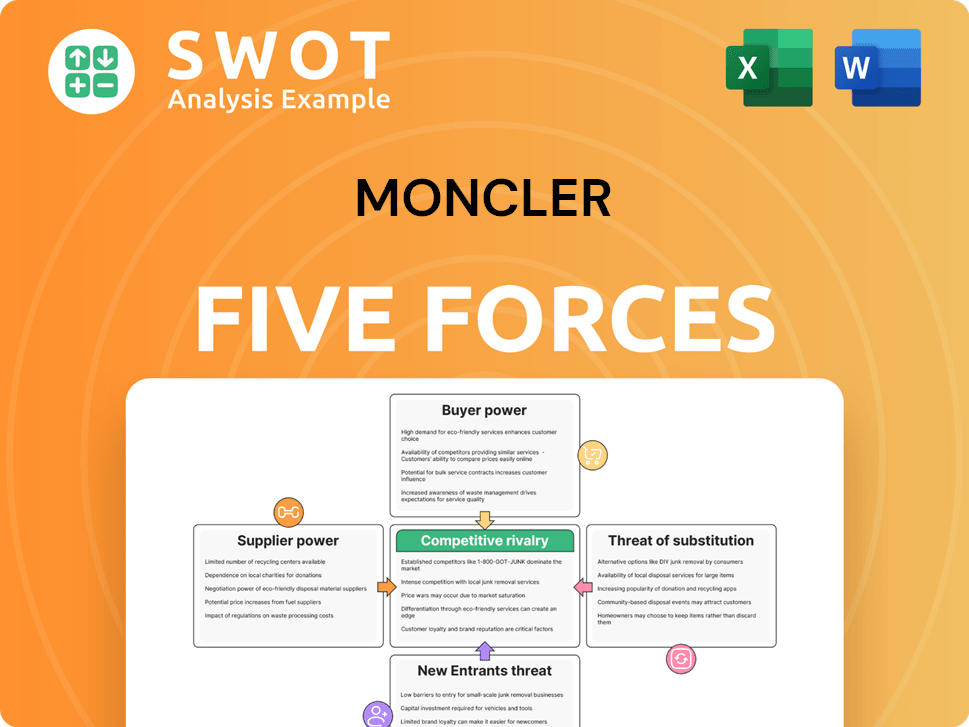
Related Blogs
- What are Mission Vision & Core Values of Moncler Company?
- What is Competitive Landscape of Moncler Company?
- What is Growth Strategy and Future Prospects of Moncler Company?
- How Does Moncler Company Work?
- What is Sales and Marketing Strategy of Moncler Company?
- What is Brief History of Moncler Company?
- What is Customer Demographics and Target Market of Moncler Company?
Disclaimer
All information, articles, and product details provided on this website are for general informational and educational purposes only. We do not claim any ownership over, nor do we intend to infringe upon, any trademarks, copyrights, logos, brand names, or other intellectual property mentioned or depicted on this site. Such intellectual property remains the property of its respective owners, and any references here are made solely for identification or informational purposes, without implying any affiliation, endorsement, or partnership.
We make no representations or warranties, express or implied, regarding the accuracy, completeness, or suitability of any content or products presented. Nothing on this website should be construed as legal, tax, investment, financial, medical, or other professional advice. In addition, no part of this site—including articles or product references—constitutes a solicitation, recommendation, endorsement, advertisement, or offer to buy or sell any securities, franchises, or other financial instruments, particularly in jurisdictions where such activity would be unlawful.
All content is of a general nature and may not address the specific circumstances of any individual or entity. It is not a substitute for professional advice or services. Any actions you take based on the information provided here are strictly at your own risk. You accept full responsibility for any decisions or outcomes arising from your use of this website and agree to release us from any liability in connection with your use of, or reliance upon, the content or products found herein.